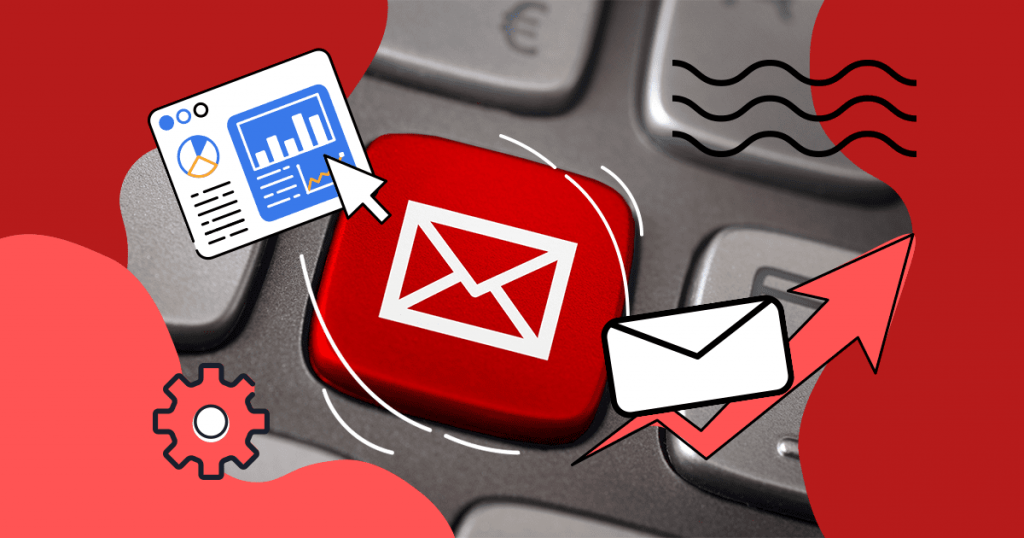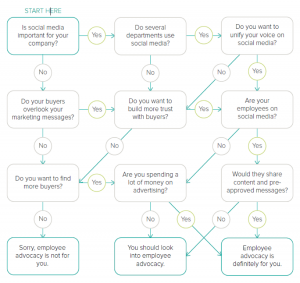There is no doubt about it: email marketing is an effective way to reach your intended audience.
Did you know that 99% of consumers check their email every single day? Further, over half of consumers will check their email prior to checking out the news or their social media account.
That’s huge when you are trying to obtain a larger reach. When you supplement your overall digital marketing with an email marketing campaign, you can rest assured that your overall marketing goals will be met quickly.
However, you must be able to measure and track the performance of your campaigns.
This is where KPIs, or Key Performance Indicators, come in. Let’s learn more, shall we?
What are KPIs, and Why are KPIs Important in Email Marketing?
KPIs are quantifiable metrics that help in gauging your performance as it relates to your email marketing goals, allowing you to stay on track and not get lost.
Each marketing campaign you create is based on your business goals.
You can gain a lot of insight from KPIs. Primarily, though, these indicators will allow you to learn more about who is opening your emails, who is forwarding them to friends, and much more.
As a result, you can learn how to develop better and more effective email marketing campaigns.
Email marketing KPIs assist in guiding you in the right direction of what steps need to be taken to improve your overall chance of success with your campaigns.
These metrics also provide you with a bigger and clearer picture of changes you may need to make so your future email marketing campaigns can perform that much better.
Don’t forget that any of the marketing goals that you set should be SMART goals, which means they are Specific, Measurable, Attainable, Relevant, and Time Specific.
KPIs fit right into this, as they offer quantifiable measurements of your goals.
4 Email Marketing Metrics
The following email marketing metrics, or KPIs, are ones that will prove to be beneficial for your company, regardless of the industry you are currently in.
#1: Open Rate
The open rate refers to the number of emails that were opened in comparison to the number of emails that were delivered in the campaign.
Generally, this metric is calculated for you automatically by your email service provider. If it is not, the basic formula to calculate the open rate is:
Open Rate = (Number of opened emails/Total number of emails delivered) x 100
So, for example, if you were to send an email to 200 people, but only 100 of them opened the email, then this would equate to an email open rate of 50% because (100/200) x 100 = 50%.
Keep in mind the total number of emails delivered is not the same as the number of emails that were sent.
Therefore, if you are using the total number of emails sent, you need to ensure you are subtracting how many emails bounced.
The open rate is an important KPI to measure because you can see whether your message is getting across to your email subscribers.
When you have a good open rate, it means that your subject line was written well enough to entice recipients to open the email instead of simply being deleted.
It also means that you were able to escape the black hole of the Spam folder and that you potentially have a good relationship with your subscribers already.
The average open rate among all industries is roughly 30%.
So, if you are anywhere near this percentage or higher, then you are doing something right. The higher this percentage, the higher the chance of conversions.
If you’re struggling with your open rate, try to ensure the subject lines of your emails feature the recipient’s name.
You can also work to segment your subscribers into groups to ensure you are delivering relevant content.
#2: Click-Through Rate (CTR)
The click-through rate will determine the number of recipients who clicked on a link within the email.
This metric can be found by using the following formula:
CTR = (Number of email clicks/Total number of emails delivered) x 100
So, let’s say you sent out 8,000 emails and 400 recipients clicked on at least one link within the email — your CTR would be 5%.
The average CTR is 2.9% among all industries, so if you’re able to exceed this percentage, then you are doing well with your campaign.
The rate varies based on a number of factors, including the industry you are in and what action the email is requesting.
For instance, welcome emails, as well as emails requiring a certain action, tend to perform better.
If your click-through rate is low, you may need to reassess the content layout, the wording, the images used, and your call-to-action (CTA).
If your click-through rate is moderate or high, then your recipients are opening your emails and engaging with the content inside. This means that the content is doing its job.
Just remember, in order for your CTR to be high, you must first focus on ensuring emails are being delivered (in the inbox) and being opened.
Once you’ve secured these metrics, there is a much higher chance that a recipient will click on a link within the body of the email.
If you need to improve your click-through rate, you will want to maintain minimal emails, ensure they are mobile-friendly in terms of formatting, give your readers a reason to click, and have a very clear CTA that repeats throughout the content.
#3: Bounce Rate
The bounce rate identifies how many of your email subscribers failed to receive the email sent out.
Now, there are two different types of bounces in email marketing: soft and hard.
A soft bounce occurs when there is some form of temporary issue with a valid email address, such as problems with the recipient’s email server, a full inbox, and the like.
These emails will continue to try to be delivered up to a certain number of times, sometimes with success.
A hard bounce occurs when there is a permanent issue with one of the email addresses you used, such as a nonexistent, closed, or incorrectly typed email address.
These email addresses need to be removed from your subscriber list immediately to ensure your sender’s reputation doesn’t take a hit.
Regardless of the reason your email bounces, this is a very important email marketing KPI to be familiar with.
The bounce rate can be calculated using the following formula:
Bounce Rate = (Number of bounced emails/Number of total emails sent) x 100
For instance, if you send out 15,000 emails, and 120 of them bounce, your bounce rate would be 0.08%. You should aim to keep your bounce rate as low as possible, ideally under 2%.
While this particular metric isn’t directly related to your goals, it is important to keep track of and ensure you don’t have significant issues with your emails.
Keep in mind that excessive hard bounces can result in your company appearing spammy by the internet service provider, impacting your sender’s reputation.
#4: Unsubscribe Rate
This metric is pretty self-explanatory. It refers to the number of email recipients who chose to opt out and unsubscribe from your emails.
Usually, you can obtain this metric from your email service provider, but you may want to calculate it manually. You can calculate this KPI by using the following formula:
Unsubscribe Rate = (Number of unsubscribes/Total number of emails delivered) x 100
So, for example, if you send out 7,000 emails, and 50 people unsubscribe, your unsubscribe rate would be 0.7%.
You can expect this number to fluctuate from one campaign to the next.
However, the average unsubscribe rate across all industries is 0.2%. If yours is significantly higher than this, you need to deal with the situation immediately.
Unsubscribe rates can be kept under control by trying to maintain a consistent email sending schedule while also delivering on the promise of the subject line within the body of the email.
As with the open rate metric, you should segment your email list so that you are sending relevant content to your subscribers.
Take note of when a high amount of unsubscribes occur as well. For example, if you notice an uptick in unsubscribes after you begin a new sending schedule, template redesign, or segmenting, you may want to reconsider your change since it likely had a direct impact on your unsubscribe rate.
One thing to always keep in mind is that people who are unsubscribing from receiving your emails are doing so voluntarily because they don’t want to be on your list, which is a good thing when it comes to the overall health of your email deliverability.
Wrap Up
There are so many more email marketing KPIs that can be measured, including list growth rate, conversion rate, and overall ROI.
However, the ones mentioned above tend to be the most important and common.
By identifying and measuring the appropriate KPIs based on your business and goals, it is much more likely to find success with your marketing efforts.
Ready to take your email marketing campaigns to the next level while improving your email marketing KPIs? Check out these email marketing tools!


![[ROCK NA] [EBOOK SEO] Complete Guide](https://rockcontent.com/wp-content/uploads/2024/06/banner_Search-Engine-Optimization.png)






